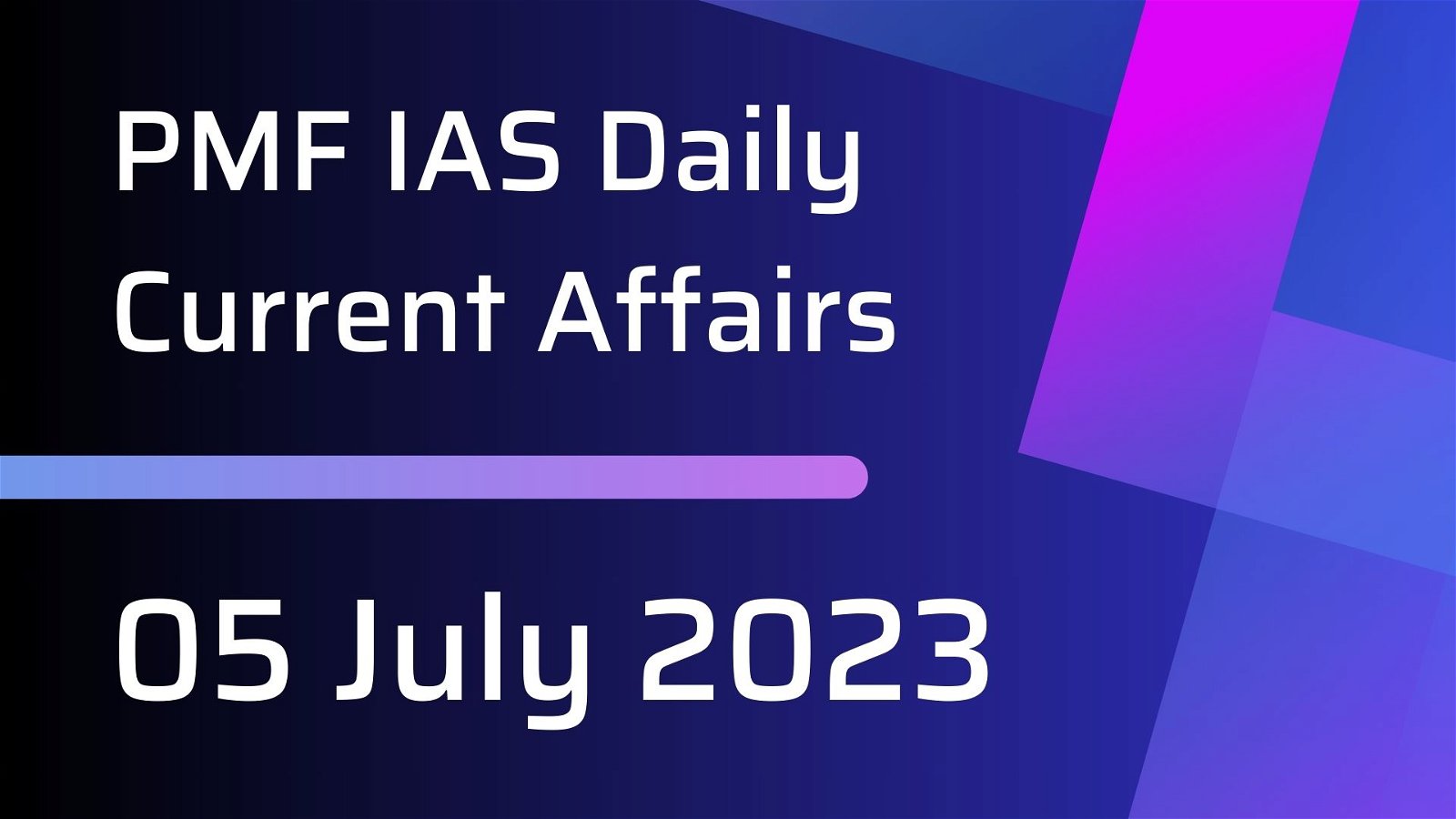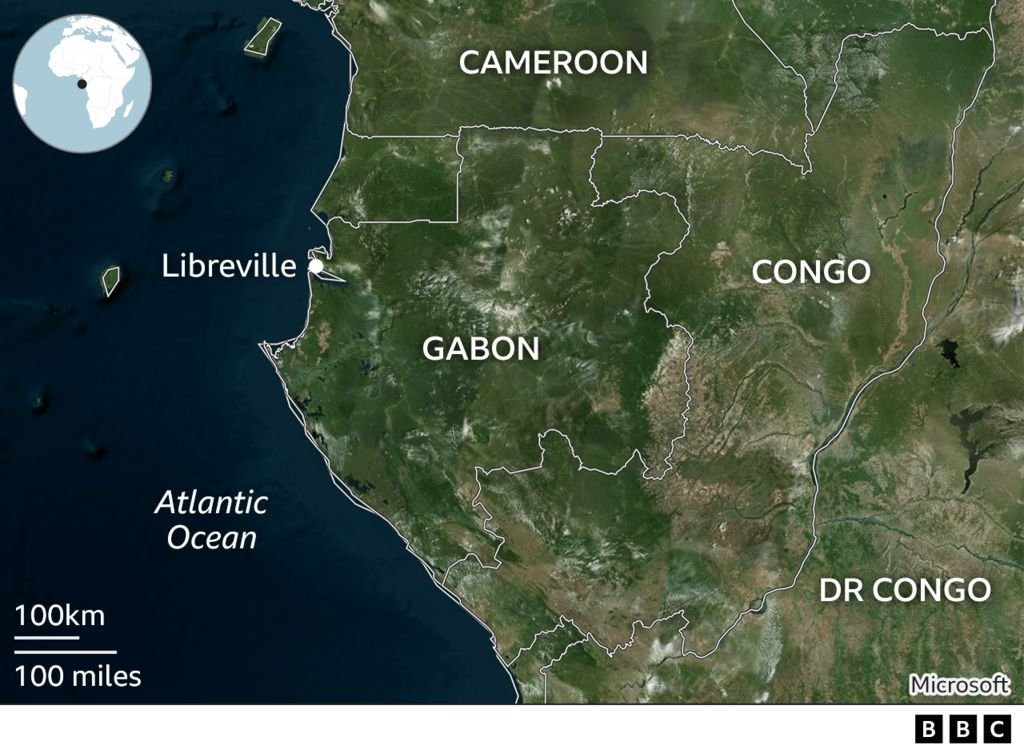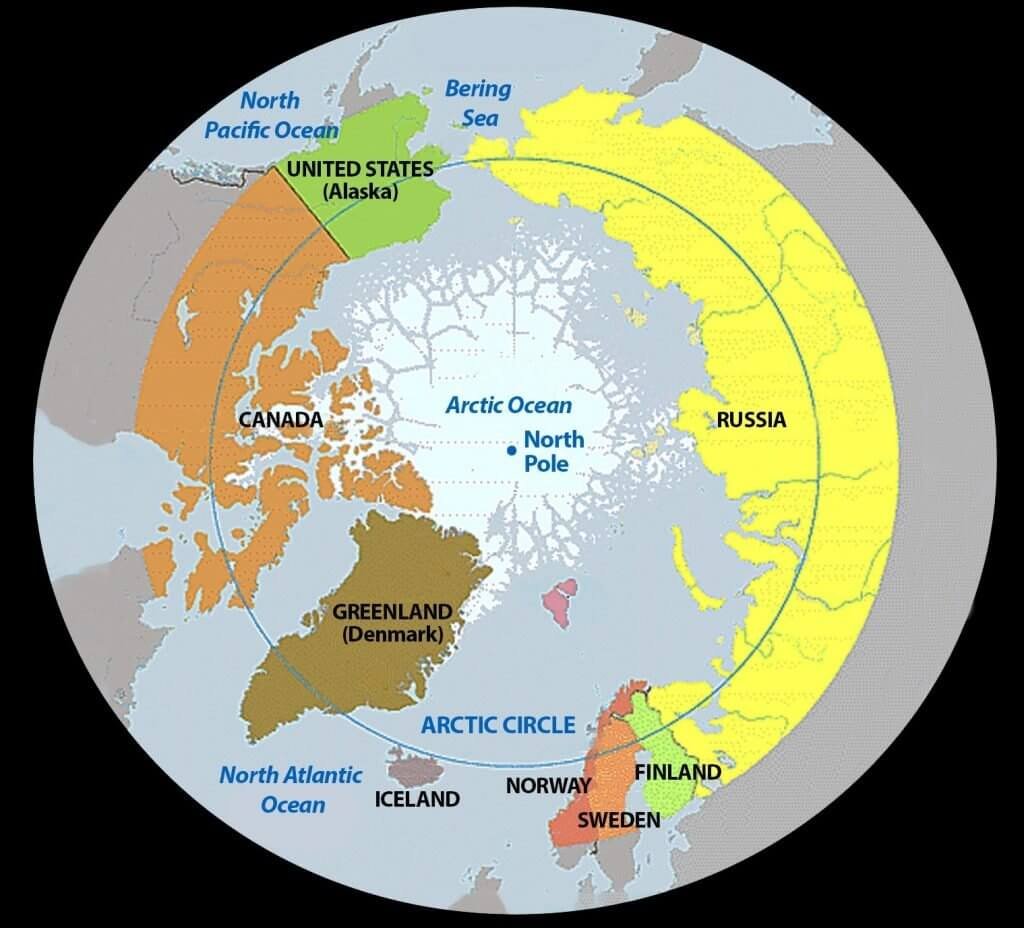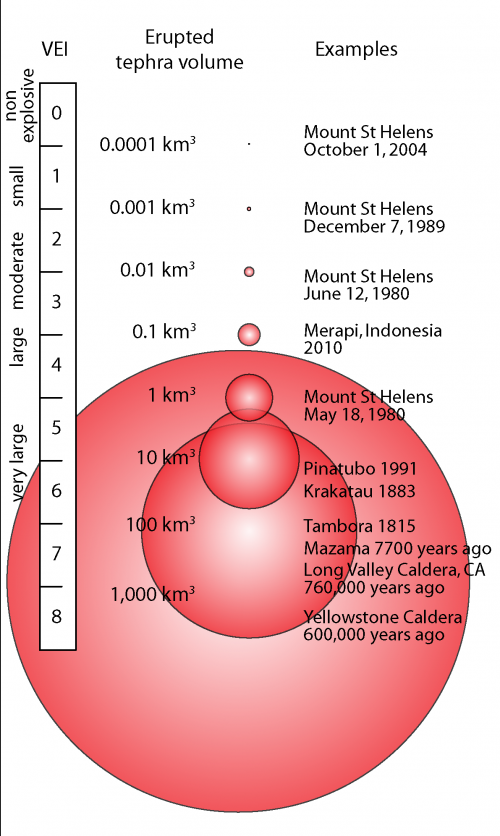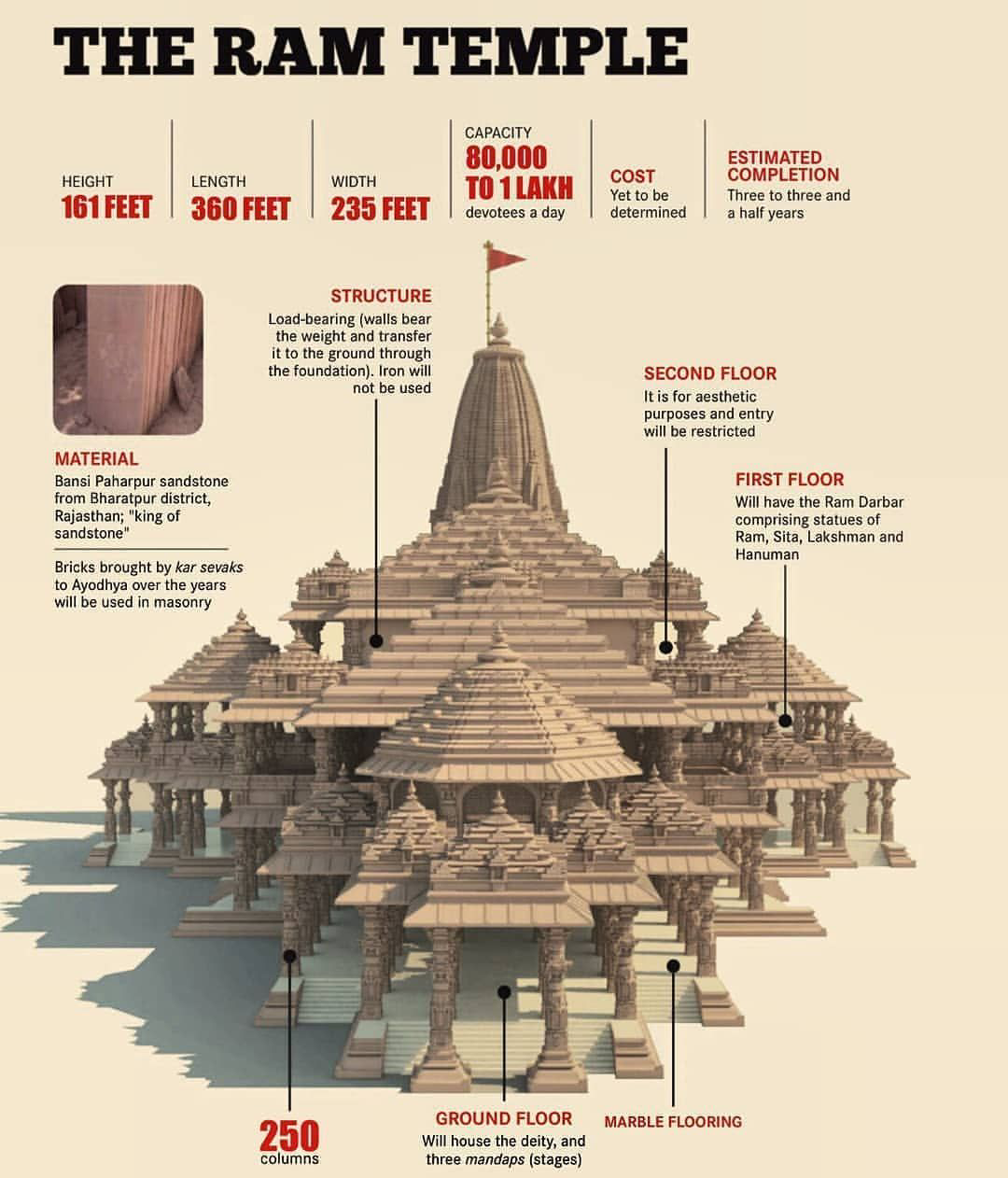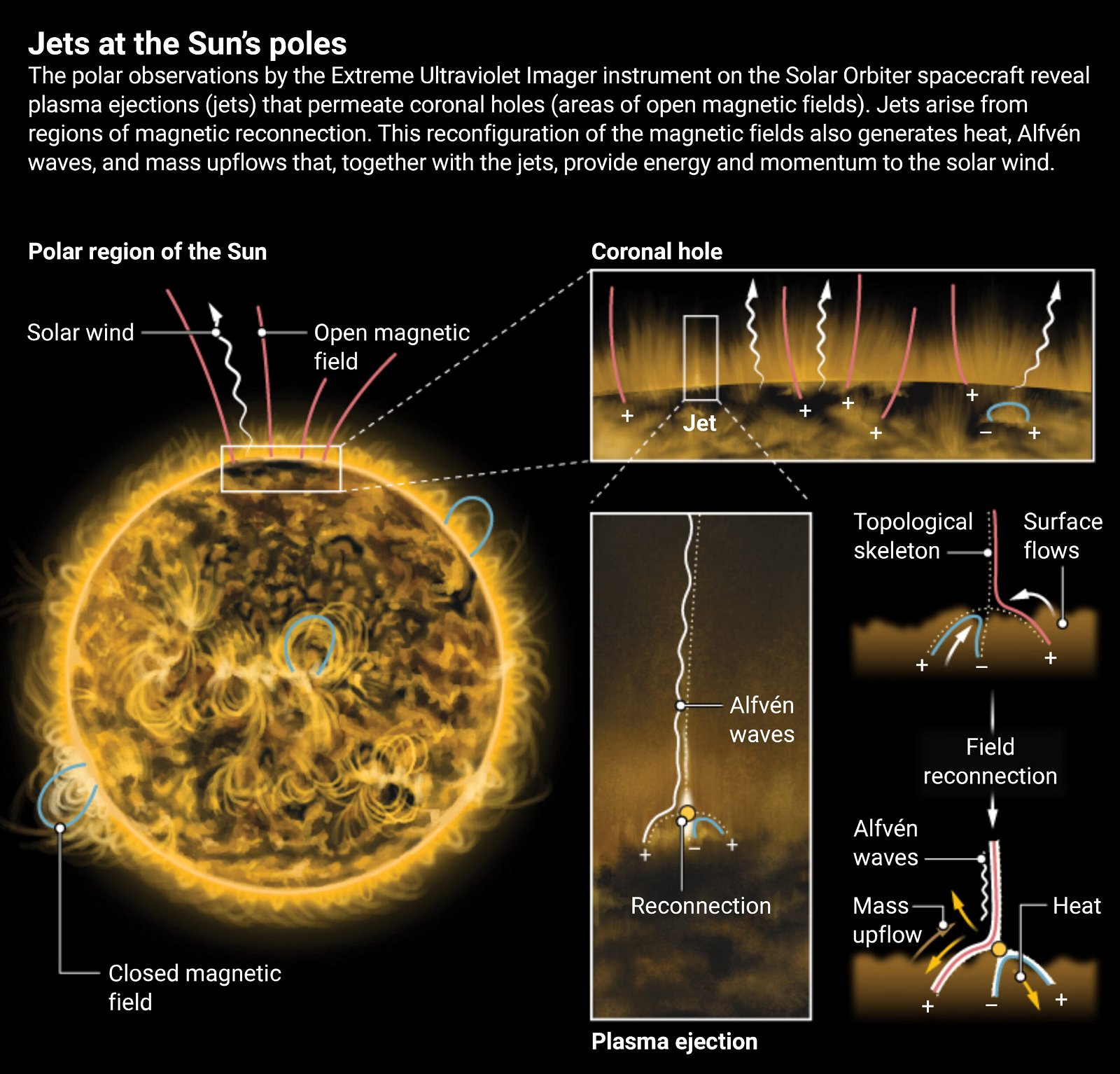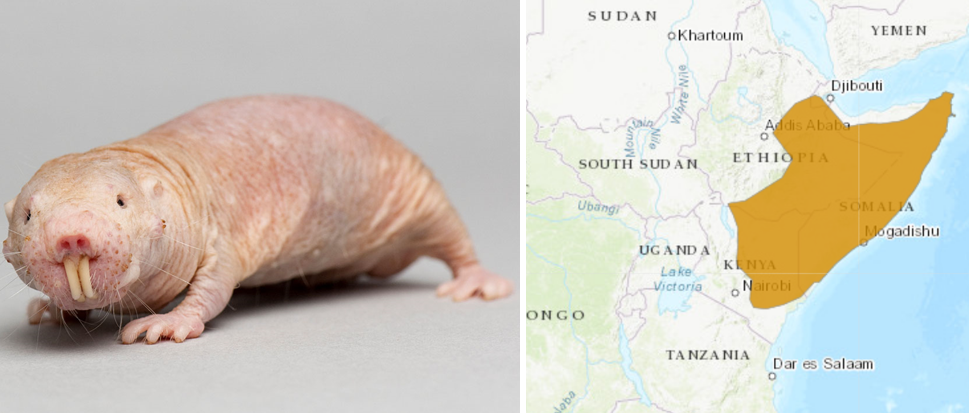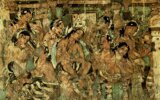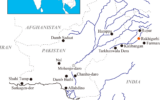
Current Affairs for UPSC Civil Services Exam – June 06, 2024
Subscribers of "Current Affairs" course can Download Daily Current Affairs in PDF/DOC
Subscribe to Never Miss an Important Update! Assured Discounts on New Products!
Must Join PMF IAS Telegram Channel & PMF IAS History Telegram Channel
{GS1 – WH – Events} Tiananmen Square Massacre
- Context (IE): Beijing’s Tiananmen Square massacre has completed 35 years.
- In April 1989, students from universities in Beijing convened in Tiananmen Square to outline a series of demands focused primarily on political and economic reforms.
- They also called for an end to corruption, censorship, and restrictions on fundamental rights.
- Their demands garnered extensive public backing, attracting support from various segments of society, including pensioners, veterans and farmers.
- May 1989: As the situation in Beijing grew more intense, martial law was declared.
- June 1989: Heavily armed soldiers and armoured vehicles advanced into the city centre to forcibly remove the pro-democracy protesters from Tiananmen Square.
Dismantling of Hong Kong Tiananmen Square Memorial 2021
- The 8-metre “Pillar of Shame” remembered the victims of China’s 1989 Tiananmen Square protests.
- The statue at the University of Hong Kong depicts a mass of torn and twisted bodies in a tall pile.
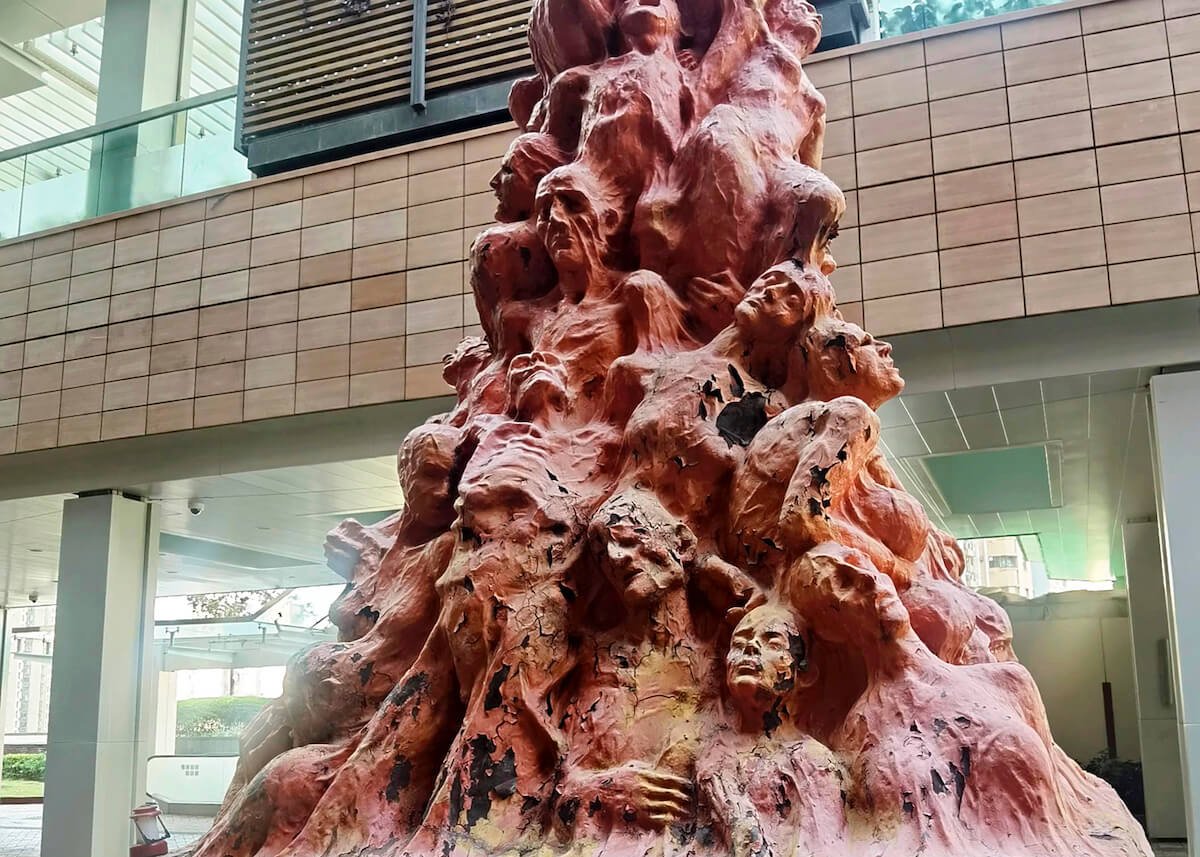
Credits: Artnews
- It was erected in Hong Kong in 1997 during an annual candlelight vigil to commemorate the event.
- Until 2019, a massive outdoor candlelight vigil was held every year on the anniversary.
- Hong Kong authorities have banned the annual vigil for the last two years, citing COVID-19 risks.
- Its removal is seen as an attempt to silence the pro-democracy protests.
Hong Kong Protests Against China 2019
- 2019 protests were to oppose the government’s plan to allow extradition to mainland China.
- The protest recalled the pro-democracy Umbrella Movement (2014) five years ago.
- Broad timeline of protests:

Credits: Nagrik network
Pillar of Shame
|
Boxer rebellion
- A Chinese secret society initiated the uprising, the Yihetuan (Righteous and Harmonious Fists).
- This group practised a form of martial arts that resembled boxing, at least to Western eyes.
- The ‘Boxers’ embarked on an armed campaign to drive all foreigners out of China.
- In some areas, the ‘Boxers’ were reinforced by better-equipped Imperial Chinese troops.
- In June 1900, the growing violence forced foreign diplomats, missionaries, soldiers and Chinese Christians to take refuge in the Legation Quarter of Peking (Beijing) and issue a call for international help.
- An eight-nation alliance quickly dispatched a 20,000-strong international force to help.
- Lieutenant-General Sir Alfred Gaselee, a British officer of the Indian Army, commanded it.
- The rebellion officially ended in September 1901 with the signing of the Boxer Protocol.
- The rebellion contributed to the removal of the Qing dynasty in 1911.
{GS2 – Governance – Initiatives} Progress of Mission Karmayogi
- Context (IE): Three years into Mission Karmayogi, the question is whether the civil services have become more capable of achieving the $30 trillion economy goal by 2047.
- Mission Karmayogi is a capacity-building scheme for civil servants aimed at upgrading the post-recruitment training mechanism of the officers and employees at all levels.
Mission Karmayogi and PM Gati Shakti
- Previously, delays in completing mega infrastructure projects like rail freight corridors and national highways were common.
- The PM Gati Shakti platform integrated legal and geographic layers, including forests, wildlife sanctuaries, roads, railway lines, and infrastructure project planning and execution.
- However, for the portal to work as intended, officials across diverse ministries and fields need skills in emerging technologies and GIS.
- The Capacity Building Commission (CBC) collaborated with the Ministry of Commerce and training institutions to create digital courses, equipping civil servants with skills to use PM Gati Shakti for project planning and coordination.
- Similarly, the CBC created an online module on emerging technologies like AI, the Internet of Things (IoT), and Big Data for the iGOT Karmayogi Bharat portal.
- The CBC worked with the Ministry of Road Transport and Highways and various institutions to create courses on high-tech road construction and resolving high-altitude geohazards.
Impact of PM Gati Shakti
- The construction of new rail lines has increased from 4 km per day to 12 km per day by 2024.
- More than 15 highway projects under Bharatmala-2 were prepared under PM Gati Shakti.
- Integrated planning has enabled new rail and highway alignments to avoid sensitive wildlife habitats.
Mission Karmayogi and Citizen-Centric Approaches Among Civil Servants
Public Security
- The CBC partnered with the Ministry of Home Affairs to train Union Territories police personnel on a self-reflection course to promote “sewa bhaav”.
- Quality Council of India’s impact assessment found that in Puducherry, citizen satisfaction with police stations rose from 24% to 66% post-training.
Railways
- A program by the CBC, Railway Board, and Indian Railways Institute of Rail Transport Management (IRITM), Lucknow, trained 100,000 railway staff in resolving customer grievances.
- Citizen satisfaction with service provision and solution response increased by 1.5 to 1.9 times post-training in Mumbai, Asansol, Bengaluru, and Lucknow railway divisions.
Other Services
- Over 4 lakh Gramin Dak Sevaks and nearly 1 lakh village-level citizen service centres (CSCs) under the Ministry of Electronics and Information Technology (MeitY) were also trained in enhanced citizen service delivery.
- The CBC partnered with the Central Board of Direct Taxes to curate an online module on systemic solutions to repeated taxpayer grievances.
Municipal Corporations
- Municipal corporations deliver services, infrastructure, and public goods like water, sanitation, and roads.
- The CBC has piloted capacity-building approaches in the municipal corporations of Ahmedabad, Rajkot, Nagpur, Pune, Bhubaneswar, and Mysuru.
- Most of the Ahmedabad and Nagpur municipal corporation staff have joined iGOT Karmayogi Bharat and are taking courses on municipal finance, road engineering, solid waste management, etc.
{GS2 – MoC – Initiatives} Industry 4.0 Baseline Survey Among MSMEs
- Context (PIB): The Department of Telecommunications (DoT) launches the “Industry 4.0 a baseline Survey among MSMEs” initiative to support MSMEs and Startups in Industry 4.0 transformation.
- The survey will aim to lay the groundwork for a robust ecosystem capable of capitalising on the capabilities offered by AI, IoT, cloud computing and the integration of 5G and 6G networks.
- The survey seeks to cover five sectors, each in North and Southern parts of India, and provide targeted support to foster innovation and competitiveness.
{GS2 – Polity – IC – Elections} Election Winners from Prison
- Context (IE): Two candidates currently imprisoned have won seats in the recent Lok Sabha elections.
- In India, the accused persons can contest elections but cannot vote.
Oath-taking Process for Jailed Lawmakers
- Despite being in prison, those elected from jail now hold a constitutional mandate as parliamentarians.
- Taking an oath (constitutional right) is the first step for MPs to begin their role as lawmakers.
- Although not explicitly stated in the Constitution, jailed lawmakers have been granted temporary parole in the past to take their oath. After taking the oath, they must return to prison.
- Taking an oath is not the same as being released on bail; it is akin to a special parole for a day.
Other Legal Aspects
- The jailed lawmaker must inform the Speaker about their inability to attend proceedings.
- The Speaker will refer their requests to the House Committee on Absence of Members, which will recommend whether to allow their absence. The recommendation is then voted on by the House.
- To attend a Parliament session or cast a vote, the lawmaker must move the court for permission.
- Only a conviction and a sentence of two or more years (Sec 8(3) of the RPA 1951) will lead to disqualification from Parliament. It does not apply if a person is only charged with criminal offences.
|
{GS2 – Polity – IC} Special Category Status (SCS)
- Context (IE): The Union government has yet to grant Special Category Status to Andhra Pradesh.
Why is Andhra Pradesh Demanding SCS?
- When Andhra Pradesh was bifurcated to create Telangana in 2014 through the AP Reorganisation Act, the union government promised Special Category Status (SCS) to AP to compensate for the loss of revenue and Hyderabad, where much development was concentrated.
- AP inherited 59% of the undivided state’s population, debt, and liabilities but only 47% of the revenue.
- The SCS would get higher grants-in-aid from the Centre, and such states enjoy special incentives such as Income-tax exemptions, GST concessions, Customs duty waivers, etc.
- In SCS states, the Centre funds central schemes up to 90%, compared to 70% in non-SCS states.
- AP argues that SCS is vital for the state’s rapid industrialisation, employment generation, and overall development, and it would encourage investments in sectors like healthcare, manufacturing, IT, etc.
{GS3 – Envi – Conservation} UNESCO State of Ocean Report 2024
- Context (DTE): The oceans are crucial for climate regulation, but our understanding is insufficient to address various ocean crises and validate carbon dioxide removal technologies: UNESCO Report.
- The report aims to monitor the progress of the UN Decade of Ocean Science for Sustainable Development (2021-2030) and to mobilise global action towards achieving a sustainable ocean.
Findings of the Report
Ocean Heat and Warming
- The upper 2,000 meters of the oceans have warmed at a rate of 0.32 ± 0.03 watts per sq.m. from 1960 through 2023 and are expected to continue warming, leading to irreversible changes.
- About 90% of the Earth’s energy imbalance (the difference between incoming and outgoing energy) is being absorbed by the oceans, resulting in a cumulative increase in ocean heat content (OHC).
- Increased OHC may prevent ocean layers from mixing, lowering the oxygen content of near-surface high-latitude waters reaching deeper layers, a process known as deoxygenation. However, it is still unclear whether deoxygenation is accelerating in response to increased OHC.
- Deoxygenation negatively impacts marine ecosystems and coastal communities reliant on oceans.
|
Ocean Acidification
- The report highlights the mean global increase in ocean acidification in all ocean basins and seas.
- Coastal waters can turn acidic due to
- Natural processes (freshwater influx, biological activity, temperature change and ENSO) and
- Human activities (nutrient input from agricultural and industrial activities)
Marine Carbon Dioxide Removal (mCDR) Technologies
- mCDR technologies capture carbon dioxide from the air and store it durably.
- These techniques, such as altering seawater chemistry or adding nutrients to promote plankton growth, face technical, environmental, and regulatory challenges.
- The ocean absorbs around one-quarter of the annual emissions of anthropogenic CO2.
Marine Biodiversity
- The UN 2030 Agenda for Sustainable Development emphasises marine biodiversity protection for sustainable food security, which aligns with the Kunming-Montreal Global Biodiversity Framework‘s goal of protecting 30% of the ocean by 2030, focusing on conservation and sustainable resource use.
- 50% of all catalogued marine species are reported in Marine Protected Areas (MPA), which occupy only 9% of the ocean. 72% of species facing extinction find refuge in MPAs, with 54% in no-take zones.
|
Case Study: Marine Protected Area (MPA) Success in the Coral Triangle
- The Coral Triangle is a marine region in Southeast Asia known for its high marine biodiversity.
- Initiative: Establishment and management of a network of Marine Protected Areas (MPAs) in the Coral Triangle to conserve coral reefs, fish populations, and other marine species.
- The MPA network has led to the recovery of coral reefs, increased fish populations, enhanced biodiversity within the protected areas, and benefitted local communities through sustainable practices.
- Key Strategies include collaborative governance involving local communities, government agencies, and conservation organisations, enforcement of fishing regulations, and community engagement.
- The success of the MPA network in the Coral Triangle highlights the importance of community involvement, effective management strategies, and long-term commitment to conservation efforts.

Credits: Wikipedia
{GS3 – Envi – Wetlands} Nagi and Nakti Bird Sanctuaries
- Context (ToI): India designated Nagi and Nakti bird sanctuaries as the newest wetlands of international importance under the Ramsar Convention on World Environment Day.
- India now has a total of 82 Ramsar Sites (third highest in the world along with China).
|
Nagi Bird Sanctuary
- Nagi Bird Sanctuary is a man-made reservoir (Nagi Dam) located in Jamui district of Bihar.
- It is designated as an Important Bird Area (IBA) by Birdlife International.
- Various migratory birds (Red-crested Pochard, Greylag Goose, Northern Pintail, etc.) travelling from the Himalayas, Europe, North Asia, and near Arctic regions visit the sanctuary.
- About 3% of the global population of Bar-headed geese (migratory birds) are found here.
- Other significant birds found here are the Indian Courser, Indian Sandgrouse, Indian Robin, etc.
Nakti Bird Sanctuary
- Nagi Bird Sanctuary is a man-made reservoir (Natki Dam) located in Jamui district of Bihar.
- It hosts one of the largest congregations of red-crested pochard in the Indo-Gangetic plain.
- The catchment area consists primarily of dry deciduous forest and is surrounded by hills.
- It is a significant wintering habitat for migratory species (over 20,000 birds).
- It is also designated as an Important Bird Area (IBA) by Birdlife International.
- The important fauna include Bengal fox, Monitor Lizard, catfish, etc.
- Both Nagi and Nakti sanctuaries form part of the Ganga basin.
Jhajha forest range
|
{GS3 – S&T – BioTech} Reverse transcriptase and Klebsiella pneumoniae
- Context (TH): Klebsiella pneumoniae bacteria may use a newfound protein called Neo to stop a bacteriophage infection in its tracks.
- The new research suggested that when the bacteria Klebsiella pneumoniae is infected by bacteriophages (viruses that infect bacteria), they use a non-coding RNA with specific motifs (or structures).
- These specific motifs could bind to reverse transcriptase and instruct cells to create DNA.
- This DNA copy has multiple copies of a gene that can create a specific protein, dubbed as ‘Neo’ for “never-ending open-reading frame”.
- It could place the bacterial cell in a state of suspended animation, blocking its replication.
- This also stalls the replication of the invading bacteriophage, and the infection is stopped in its tracks.
Reverse transcriptase (RT)
- Central Dogma: Before the discovery of RT, the prevailing belief was that hereditary information flowed only from DNA to RNA and from RNA to protein in all living beings.
- Howard Temin and David Baltimore’s discovery showed that information could flow the other way, too, with RNA giving ‘rise’ to DNA.
- In diagnostics, clinicians use reverse transcriptase to convert RNA to DNA and thus estimate the amount of viral material in a given sample.
- This technique has quickly found wide application and use in the study of RNA viruses, including hepatitis B, human immunodeficiency virus (HIV), and recent RT-PCR.
Role of Reverse transcriptase (RT) in the human genome
- The human genome is interspersed in many places with sequences (called elements) that appear to have originated from retroviruses, referred to as retroelements.
- Evolutionary biologists believe these retroelements to have been transferred horizontally during millions of years of evolution.
- Horizontal gene transfer refers to genes ‘jumping’ between organisms instead of parent to offspring.
- Retroelements in the human genome and bacterial reverse transcriptases have a common evolutionary history and share functional mechanisms.
- Bacterial reverse transcriptases — believed to be the precursors of their eukaryotic counterparts — exhibit analogous mechanisms.
- Thus, the discovery of RT has made this retroelement from an “ignored non-functional” genome to an area of study.
{GS3 – S&T – Space} Milgromian dynamics or MOND
- Context (TH): Recent research questions the validity of Milgromian dynamics or MOND theory.
- MOND theory was proposed by Israeli physicist Mordehai Milgrom in 1982.
- The central postulate of MOND is that gravity starts behaving differently from what Newton expected when it becomes feeble, as at the edges of galaxies.
- MOND was successful at predicting galaxy rotation without any dark matter.
|
Role of Cassini Mission
- The Cassini mission orbited Saturn from 2004 to 2017 before it finally crashed into Saturn.
- Saturn orbits the Sun at 10 AU. Due to a quirk of MOND, the gravity from the rest of our galaxy should subtly cause Saturn’s orbit to deviate from the Newtonian expectation.
- But Cassini did not find any anomaly of the kind expected in MOND. Newton still works well for Saturn.
Coma Cluster
|
{GS3 – S&T – Space} TRISHNA Mission
- Context (TH | NDTV): On the event of World Environment Day, ISRO provided details of Thermal Infrared Imaging Satellite for High-resolution Natural Resource Assessment (TRISHNA) mission.
- The TRISHNA Mission is a collaborative endeavour between ISRO and the French National Centre for Space Studies (CNES).
- It is equipped with two primary payloads.
- The Thermal Infra-Red (TIR) payload, provided by CNES, features a four-channel long-wave infrared imaging sensor capable of high-resolution surface temperature and emissivity mapping.
- The Visible – Near Infra-Red – Short Wave Infra-Red (VNIR-SWIR) payload, developed by ISRO, includes seven spectral bands designed for detailed mapping of surface reflectance of VSWIR bands for generating important biophysical and radiation budget variables.
- It will operate in a sun-synchronous orbit at an altitude of 761 km.
- The mission is designed for a five-year operational life and will provide a spatial resolution of 57 metres for land and coastal areas and 1 km for oceanic and polar regions.
- The satellite will use a set of infrared sensors – developed by India and France in collaboration – to monitor the temperature.
- Objective: Detailed monitoring of the energy and water budgets of the continental biosphere for quantifying terrestrial water stress and water use and high-resolution observation of water quality and dynamics in coastal and inland waters.
- It will deliver high spatial and high temporal resolution monitoring of earth’s surface temperature, emissivity, biophysical and radiation variables for surface energy budgeting at regional to global scale.
- It helps assess urban heat islands, detect thermal anomalies linked to volcanic activity and geothermal resources, and precisely monitor snow-melt runoff and glacier dynamics.
- The mission will also provide valuable data on aerosol optical depth, atmospheric water vapor, and cloud cover.
Significance
- It will help to assess irrigation water use and enhance crop water productivity through efficient and sustainable water management practices and better micro-watershed management.
- It will track key indicators such as droughts, permafrost changes, and evapotranspiration rates and help in climate monitoring.
- Water quality monitoring will aid in detecting pollution in coastal and inland water bodies.
- It will help in identifying sub-marine groundwater discharge at the coastal fringes.
- It will support the detection of sub-surface fires and the assessment of geothermal resources.
- Cryosphere monitoring will evaluate snow cover and snow-melt patterns, contributing to improved hydrological models.
- The data provided data will contribute to several global initiatives, such as GEOGLAM, the UN’s Sustainable Development Goals and targets, and the Global Water Watch.
GEOGLAM (Group on Earth Observations Global Agricultural Monitoring Initiative)
Global Water Watch
|
Other Indo-French collaborations to monitor Earth
World Environment Day
|
{Prelims – Awards} C-DOT wins UN’s WSIS 2024 PRIZE
- Context (PIB): The Centre for Development of Telematics (C-DOT) has been honoured with the UN’s WSIS 2024 “Champion” Award for its Cell Broadcast Emergency Alerting Platform project.
- The project “Mobile-Enabled Disaster Resilience through Cell Broadcast Emergency Alerting” falls under the AI, C-7, E-environment category for ‘Benefits in all aspects of life – E-environment’.
- The World Summit on the Information Society (WSIS)+20 Forum 2024, a high-level event conducted by the International Telecom Union (ITU), was held in Geneva, Switzerland.
About the Project
- C-DOT’s indigenous and automated Cell Broadcast Emergency Alerting Platform offers a solution for delivering life-saving emergency alerts to mobile phones via cellular networks in near real-time.
- It is a geo-targeted, multi-hazard, and multi-lingual system that enhances disaster risk management efficiency and aligns with global initiatives like Early Warnings for All (EW4All) of ITU.
AI for Good Global Summit
- The AI for Good Global Summit was organised alongside WSIS.
- It is the UN’s leading platform promoting AI for advancing health, climate, gender, inclusive prosperity, sustainable infrastructure, and other global development priorities.
- The cutting-edge telecom solutions showcased by C-DOT in the event are:
- ITU – CAP based early warning alert system
- Cell Broadcast Technology for Disaster Management
- ASTR (AI and Facial Recognition powered Solution for Telecom SIM Subscriber VeRififcation) for Detection of SIM used in Cyber Fraud.
|
C-DOT (Centre for Development of Telematics)
- C-DOT is an autonomous Telecom R&D centre under the Department of Telecommunications.
- It develops state-of-the-art telecom technology to meet the needs of the Indian telecom network.
- Major areas of work: Optical, Wireless, Switching and routing, Satellite Communications, Network Management, and Security and encryption.
International Telecommunication Union (ITU)
- ITU is the United Nations specialised agency for information and communication technologies (ICTs).
- It aims to facilitate international connectivity in communications networks, allocates global radio spectrum and satellite orbits, develops technical standards, and strives to improve access to ICTs.
- Headquarters: Geneva, Switzerland. India is a member.
- ITU organises the annual World Summit on the Information Society (WSIS) Forum to coordinate the implementation of the WSIS Action Lines for advancing sustainable development goals.
- ITU Area office and Innovation Centre (funded by India) is located in the C-DoT office in New Delhi.
{Prelims – Envi – Species} Cassowary
- Context (NDTV): The southern cassowary is facing the risk of extinction in Australia.

Credit: Birdfact
- Cassowaries belong to the group of flightless birds called the ratites. Other ratites include the ostrich, emu, moa (now extinct), and small kiwi.
- They are one of the closest living species to dinosaurs.
- There are three extant (living) species of cassowary:
- Southern (Casuarius casuarius)
- Northern (C. unappendiculatus)
- Dwarf (C. bennetti)
- The southern cassowary is the largest forest bird in the world and the second heaviest bird in the world after the ostrich. It is the third tallest after the ostrich and emu.
- Distribution: Northern Australia, New Guinea, and surrounding islands.
- Habitat: They live in tropical forests and wetlands.
- Physical appearance: The body is black in adults and brownish in immature birds. Its naked blue head is protected by a bony helmet or casque.
- Diet: They are predominantly frugivorous, feeding on fruits that have fallen to the forest floor, but will predate on small vertebrates where available.
- Conservation status: Least concern (all three sub-species).
- Threats: Car strikes, clearing of native habitats, dog attacks and climate change.
- They are considered a “keystone species” as they play a vital role in maintaining biodiversity and helping spread seeds in the rainforest.
{Prelims – Sci – Bio – Diseases} Pneumothorax
- Context (IE): NEET UG 2024 Topper suffered from pneumothorax, a severe lung condition.

Credit: Medium
- A pneumothorax is a lung rupture because of a puncture. It is when air gets inside the chest cavity and creates pressure against the lung, causing it to collapse partially or fully.
- It happens when there’s air in the space between the chest wall and the lung (pleural space).
- Causes: Lung injury, smoking, lung diseases.
- Symptoms: Slight chest pain and breathlessness. But in extreme emergencies, one may present with profound breathlessness and a dangerous fall in oxygen levels.
{Prelims – Sci – Bio} Hypothermia
- Context (TH): Nine among a group of trekkers from Bengaluru died due to hypothermia.
- Hypothermia is a condition that occurs when core body temperature drops below 95 degrees Fahrenheit (35° Celsius). The normal human body temperature is around 37°C.
- It occurs when the body loses more heat than it generates.
- The hypothalamus regulates the body temperature. When an individual is exposed to cold, the hypothalamus raises body temperature through measures such as increasing muscle tone and shivering.
- If exposure to cold continues, it will eventually overwhelm the body, and the shivering will stop. At this point, multiple organs may stop functioning, which ultimately leads to death.
|







![PMF IAS Environment for UPSC 2022-23 [paperback] PMF IAS [Nov 30, 2021]…](http://pmfias.b-cdn.net/wp-content/uploads/2024/04/pmfiasenvironmentforupsc2022-23paperbackpmfiasnov302021.jpg)

